Meet The Binturong AKA The Bearcat
If you’ve ever wandered through a rainforest and caught the scent of freshly popped popcorn, there’s a good chance you were near one of nature’s most unusual mammals—the binturong, also known as the bearcat! Native to the dense forests of Southeast Asia, this mysterious creature combines the agility of a cat, the curiosity of a bear, and the surprising aroma of a snack bar. Today we’re diving into the fascinating world of the popcorn-scented bearcat!
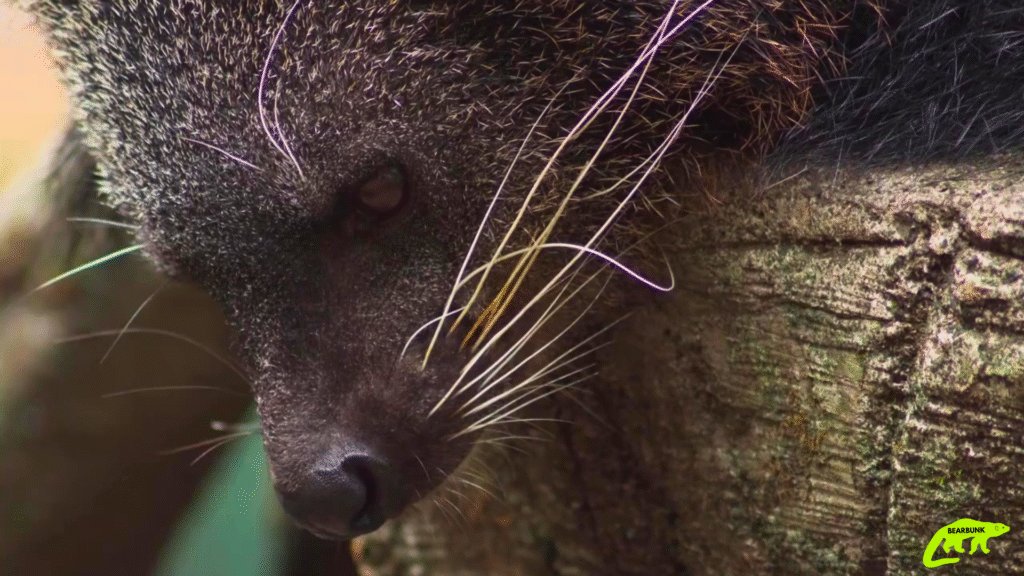
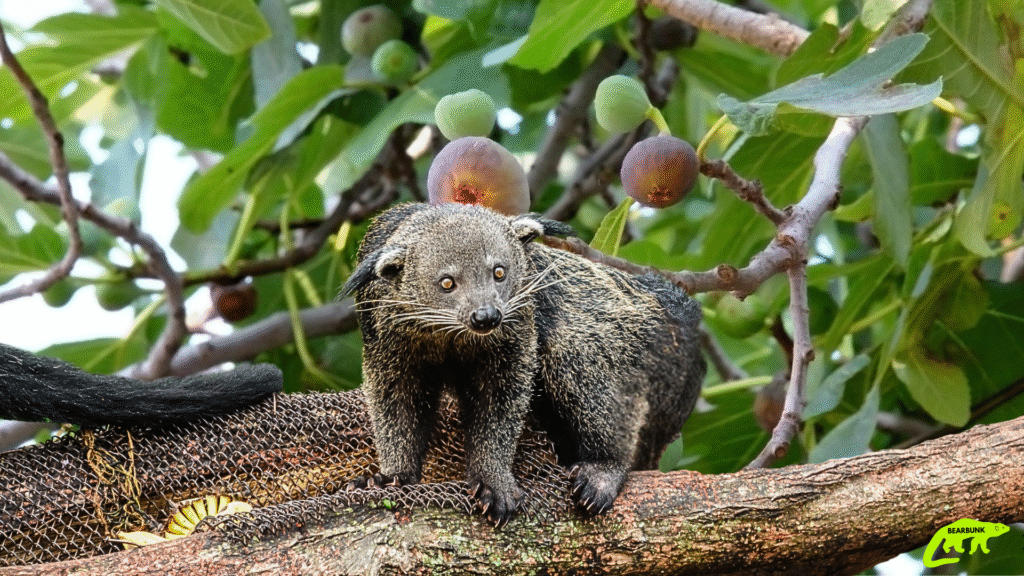
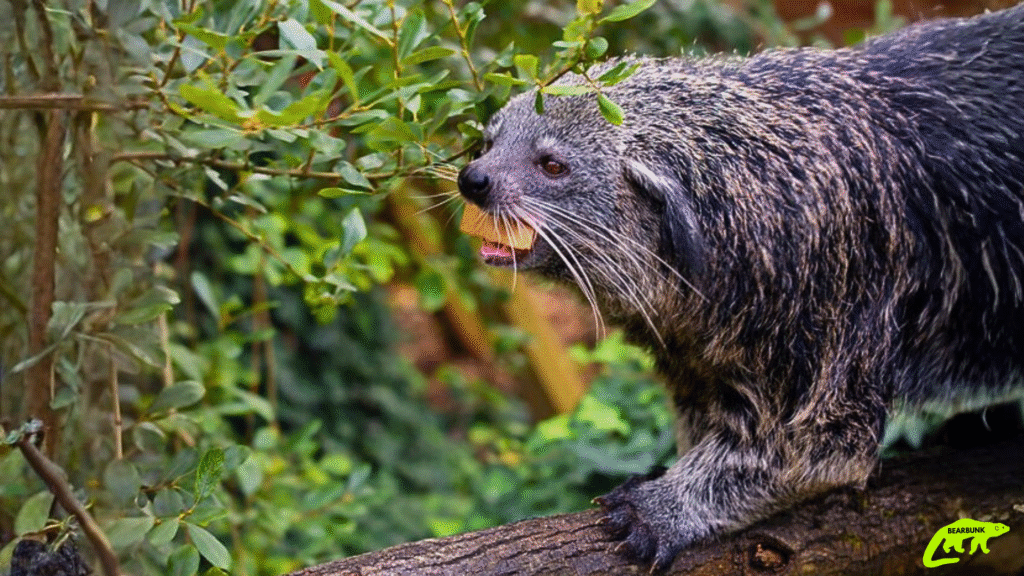
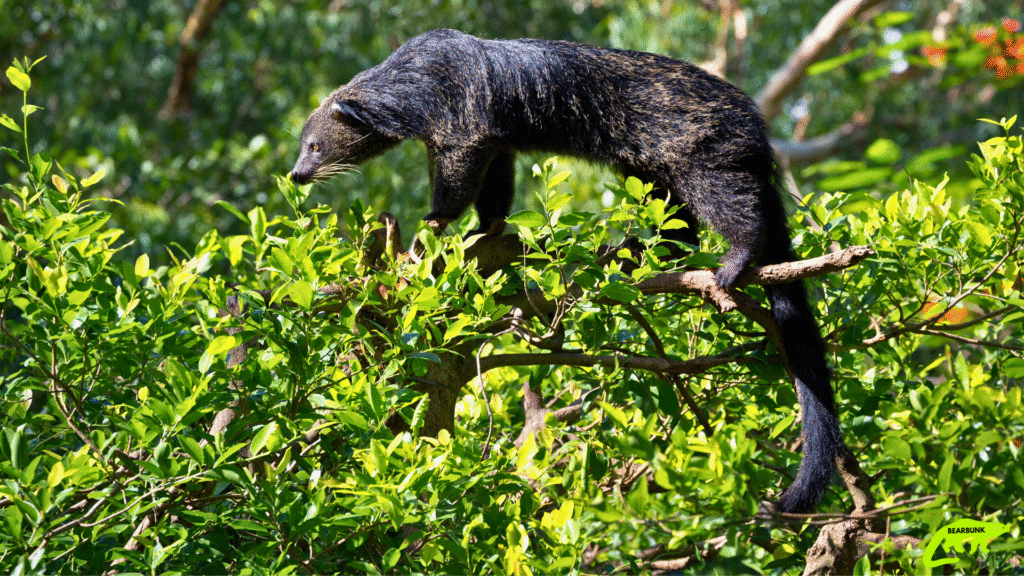
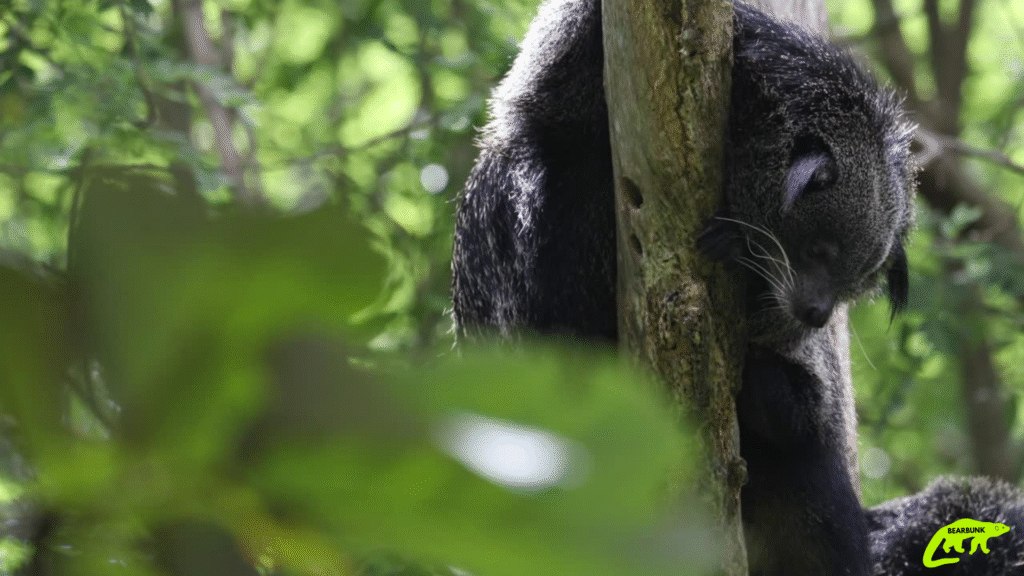
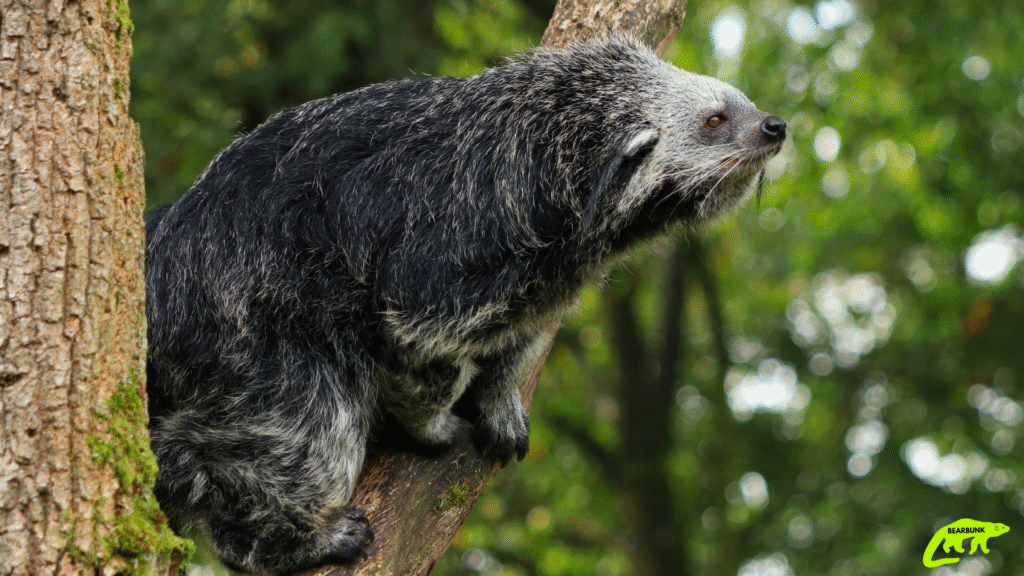


Species of Binturongs
The binturong (Arctictis binturong)—often called the bearcat—is a unique member of the civet family found throughout Southeast Asia’s tropical forests. It’s the only species in its genus, easily recognized by its long, muscular prehensile tail, coarse black fur, and that unmistakable popcorn-like scent. Though its appearance seems part bear and part cat, it’s neither—its closest relatives are actually civets and genets.

Description
Binturong (Arctictis binturong)
A large, tree-dwelling mammal with coarse black fur, long whiskers, and a prehensile tail used for climbing. Known for its popcorn-like scent and gentle, curious nature.
The binturong is the only member of its genus (Arctictis), placing it among the most distinctive members of the civet family (Viverridae).
Taxonomy
Kingdom: Animalia
Phylum: Chordata
Class: Mammalia
Order: Carnivora
Family: Viverridae
Subfamily: Paradoxurinae
Genus: Arctictis
Subspecies
Several regional subspecies exist across Southeast Asia, including forms from India, Myanmar, Sumatra, Java, and the Philippines. These differ slightly in size, fur color, and tail length but are all part of the same species, Arctictis binturong.
Taxonomists list anywhere from 6 to 9 subspecies, including:
- Arctictis binturong binturong – the nominal form (mainland Southeast Asia)
- A. b. albifrons – western Myanmar and eastern India
- A. b. penicillatus – Sumatra
- A. b. kerkhoveni – Java
- A. b. whitei – Palawan (Philippines)
- A. b. niasensis – Nias Island
- A. b. menglaensis – northern Laos and southern China
These subspecies are visually similar, but vary in things like coat color (some darker or more silver-gray), size, and tail thickness.
Habitat
The binturong thrives in the rainforests of Southeast Asia, including Thailand, Malaysia, Indonesia, and the Philippines. It’s an arboreal species, spending most of its time in the canopy layer where it uses its long, muscular prehensile tail as a fifth limb. This tail helps it grip branches, balance while climbing, and even cradle its young.
Their preferred homes are areas with dense vegetation, fruiting trees, and freshwater sources, where they can forage safely and help the forest regenerate through seed dispersal.
Diet
Binturongs are frugivorous, meaning they primarily eat fruit, especially figs, but they’re not picky. They’ll also snack on leaves, eggs, insects, small birds, and rodents. This varied diet makes them important seed dispersers, spreading fruit seeds far and wide as they move through the canopy. Without them, many rainforest trees would struggle to reproduce effectively—a reminder of just how interconnected rainforest life truly is.
Share On Social:
Mating & Raising Young
Females are typically larger than males and may give birth to one or two babies after about 90 days of pregnancy. The babies cling tightly to their mother’s fur, sometimes riding on her back as she moves through the treetops. Binturongs are attentive parents, and the young stay with their mother for several months before venturing out on their own.
In the wild, these unique mammals can live up to 20 years, and even longer under human care.
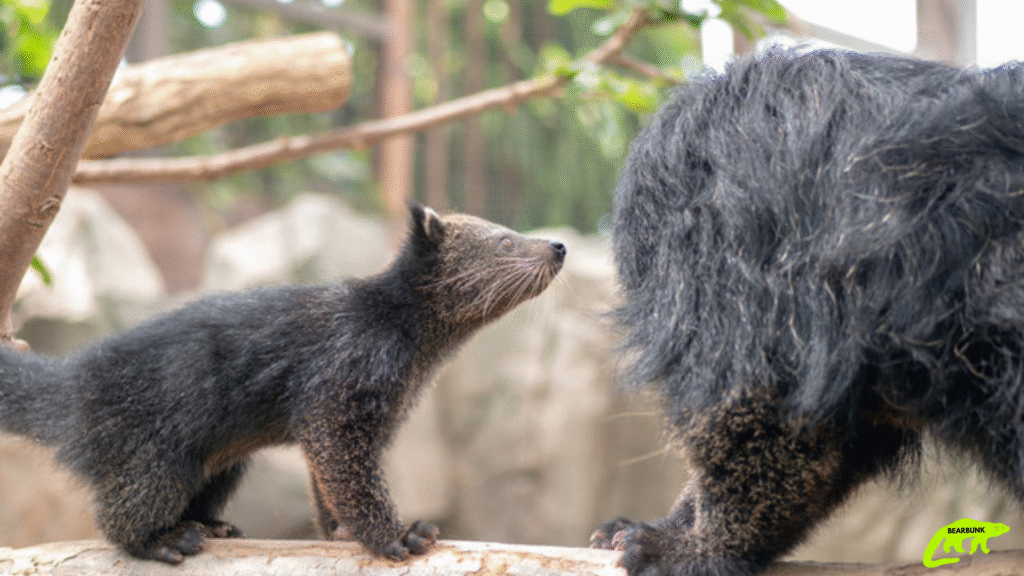
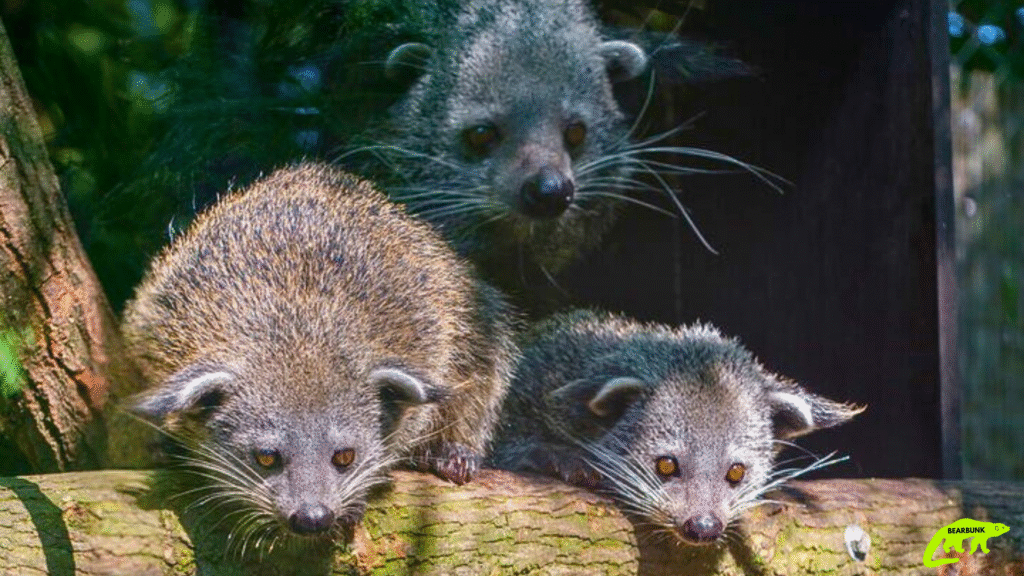
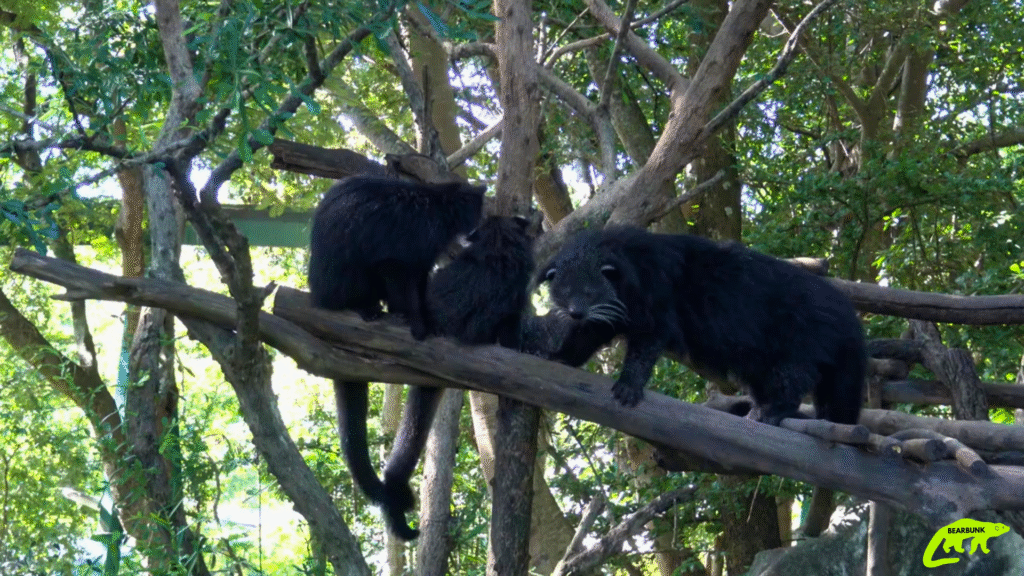
Fun Facts
- 🐾 Popcorn Smell: The scent comes from chemical compounds in their urine and scent glands—especially one called 2-acetyl-1-pyrroline, which is the same compound found in popcorn and toasted bread.
- 🌳 Prehensile Tail: It’s one of the few Old World mammals with a tail that can grasp and hold objects.
- 🌙 Nocturnal Lifestyle: Binturongs are most active at night, prowling through the canopy in search of fruit.
- 🍃 Communication: They use vocalizations, scent marks, and tail gestures to interact with others in their territory.
- 🌱 Seed Spreader: By eating fruit and dispersing seeds through their droppings, they play a vital role in rainforest regeneration.
About Binturong
Common Name: Binturong (Bearcat)
Scientific Name: Arctictis binturong
Family: Viverridae
Subfamily: Paradoxurinae
Size: 24–38 inches (body) + 22–35-inch tail
Weight: 20–30 kg (45–66 lbs)
Lifespan: Up to 20 years (wild), 25+ (captivity)
Location: Southeast Asia (Thailand, Malaysia, Indonesia, Philippines)
Habitat: Rainforests, dense tropical forests, canopy layers
Diet: Fruits, figs, leaves, eggs, small birds, insects
Conservation Status: Vulnerable
The binturong’s combination of prehensile tail, keen senses, and that famous popcorn scent make it one of Southeast Asia’s most distinctive mammals. Its seed-spreading habits help maintain forest balance, making it a true keystone species.
Why We Love Them
From their lazy daytime naps high in the trees to their gentle curiosity and comical popcorn scent, binturongs are living proof that nature still holds wonderful surprises. Their calm nature, importance to the ecosystem, and unique aroma make them one of our favorite discoveries of the rainforest.
Conclusion
The binturong may not roar like a bear or purr like a cat, but it bridges the gap between both with style! These gentle, nocturnal explorers remind us that the rainforest is full of hidden gems—and that even the strangest traits (like smelling like popcorn!) can have a purpose in nature.
Protecting their forest homes helps preserve the balance of Southeast Asia’s ecosystems—and keeps the scent of “wild popcorn” drifting through the canopy for generations to come. 🌿🍿
Watch the Video on YouTube:
Not a Bear or a Cat – Meet the Binturong: The Popcorn Scented “Bearcat” of Southeast Asia! – YouTube
Learn more about:
Mammals, Rainforest, Asian Wildlife, Slow Animals, Keystone Species and Smart Animals
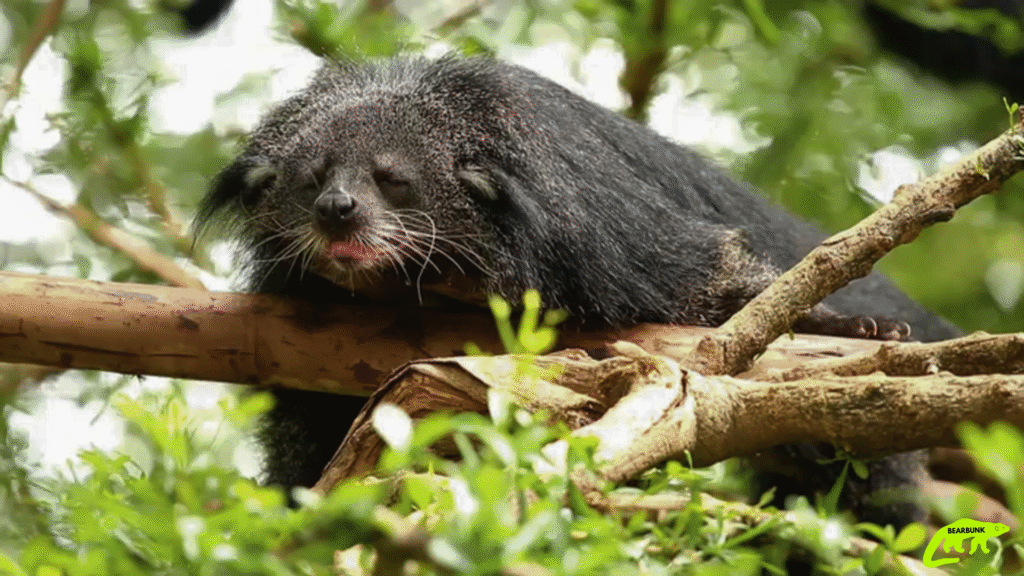
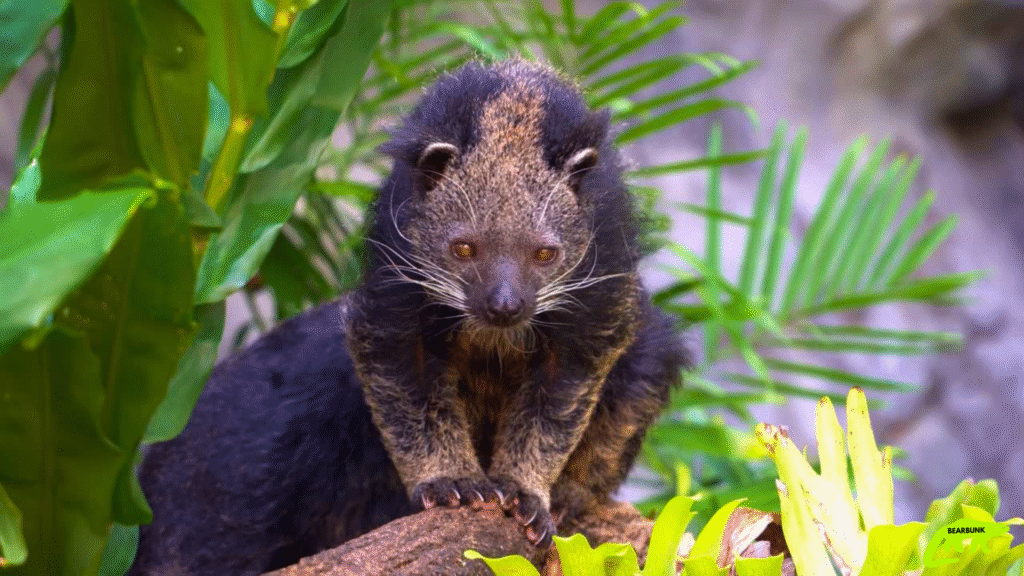
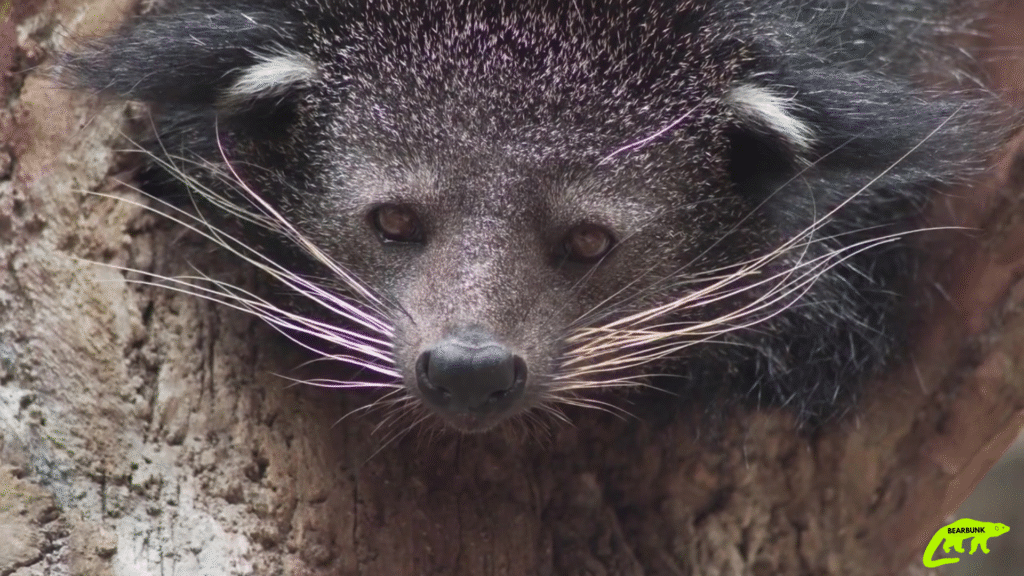
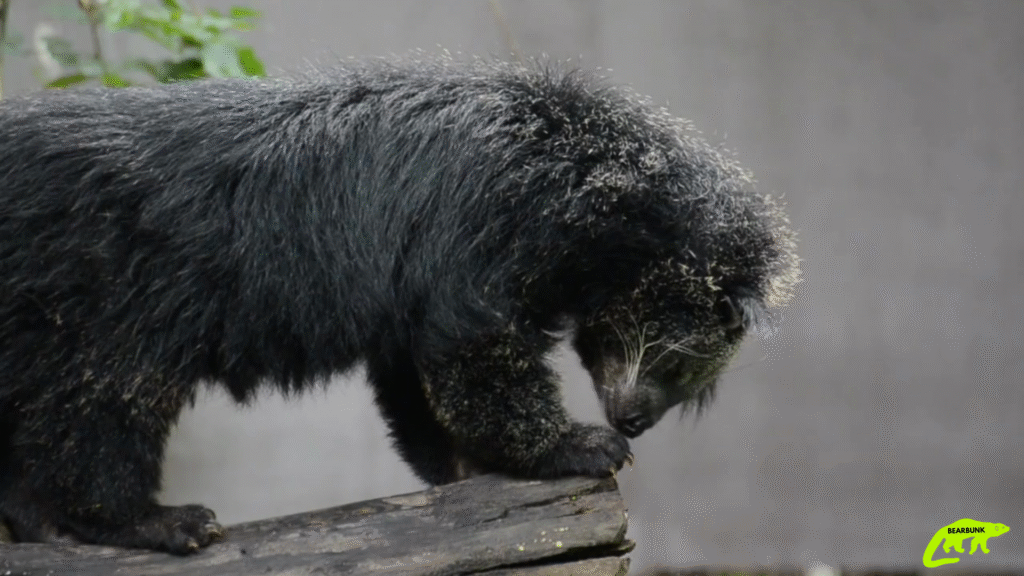
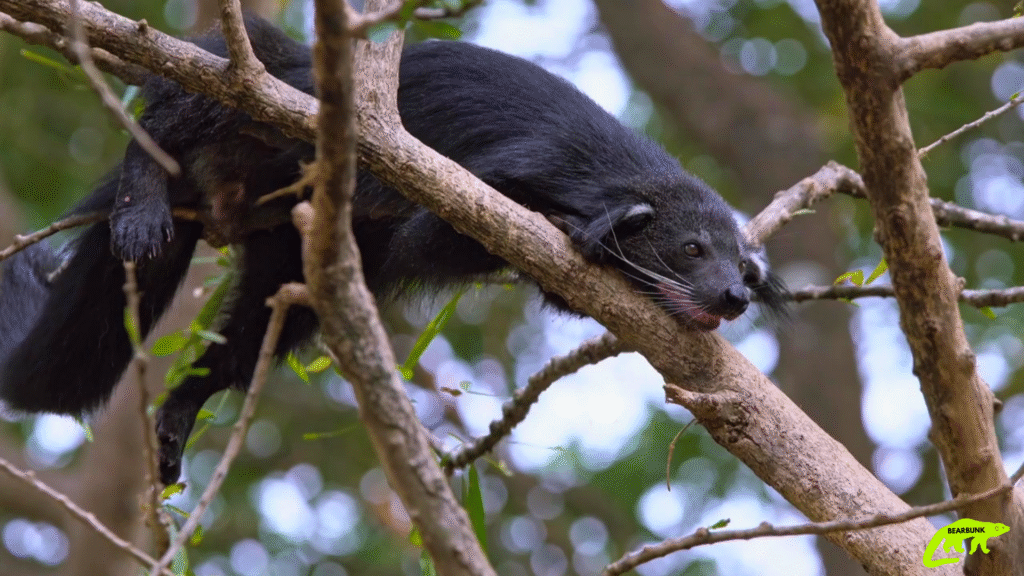
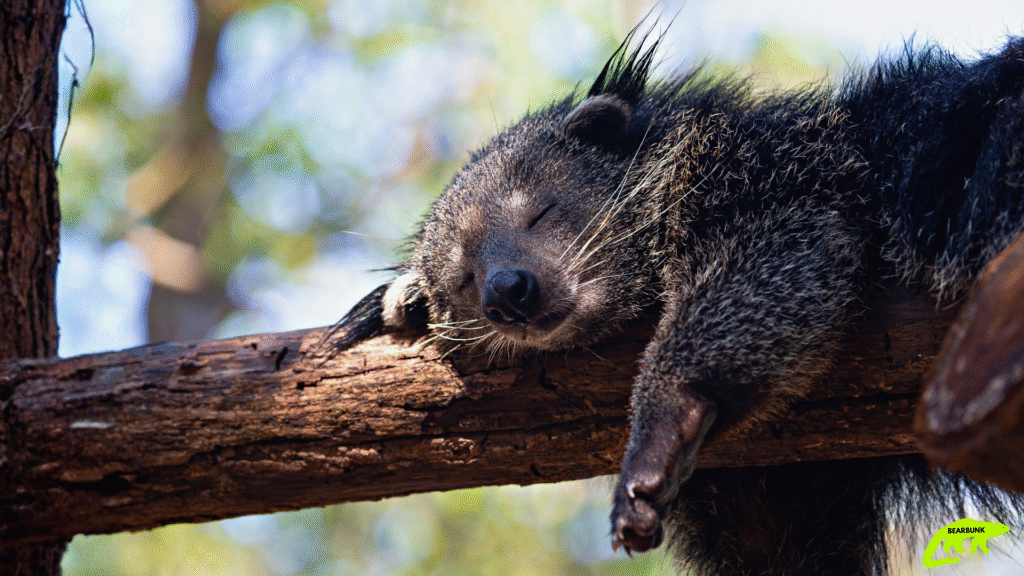
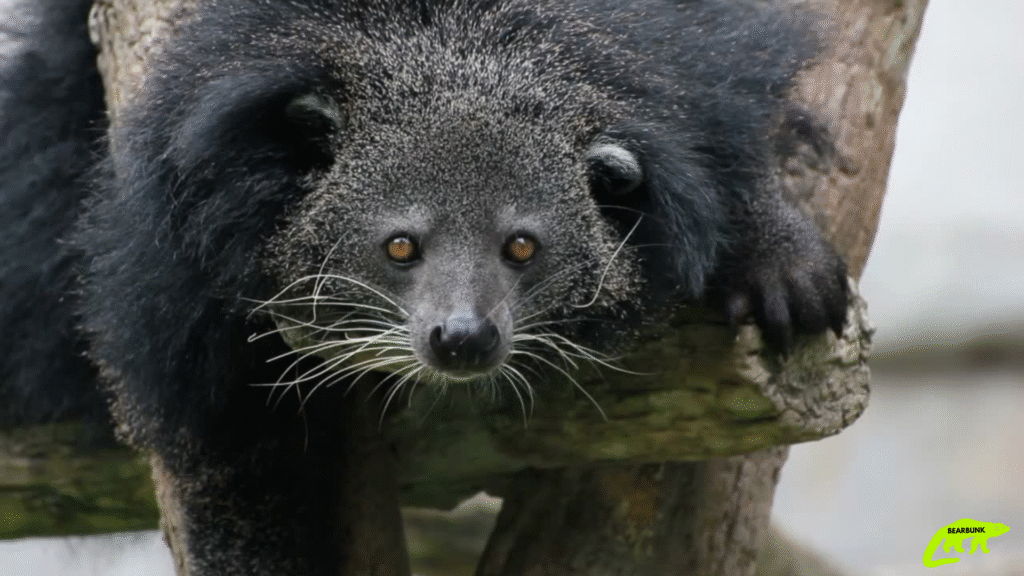
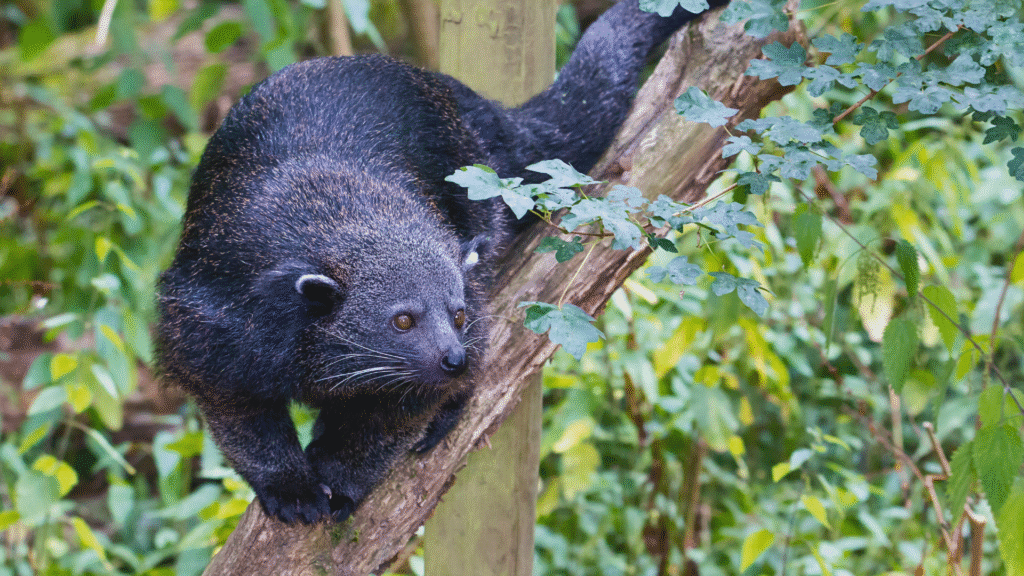
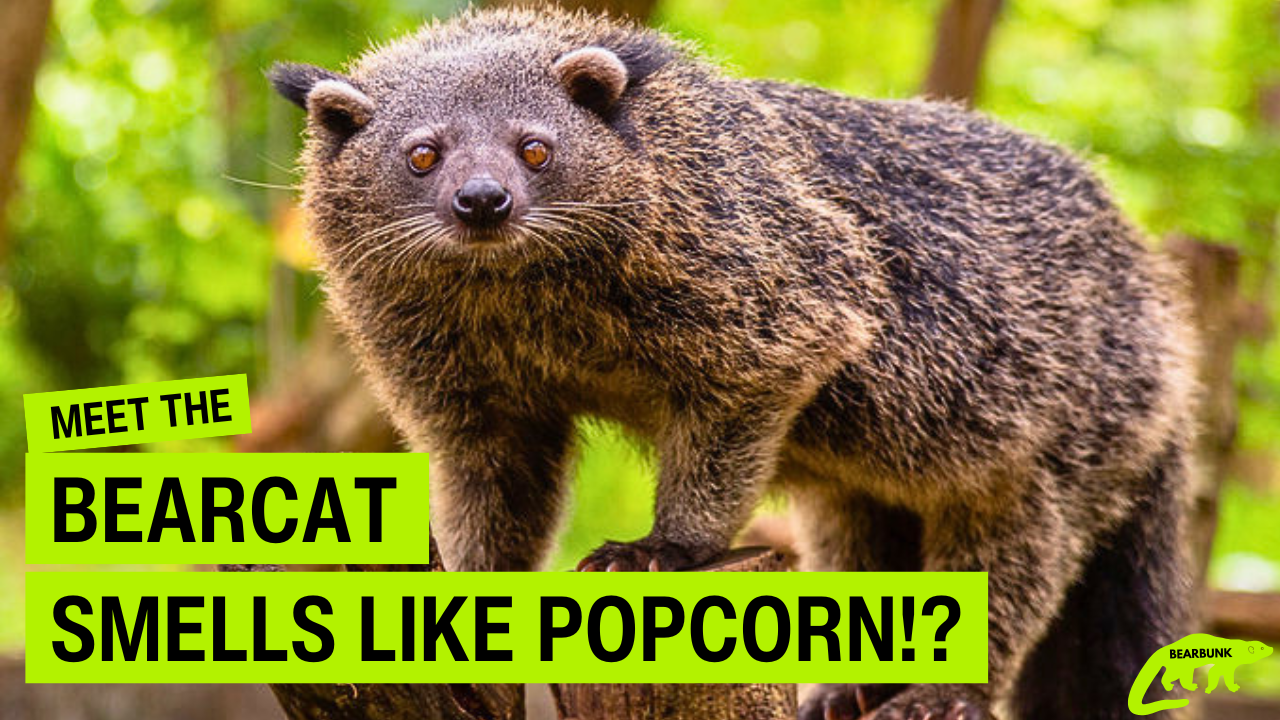
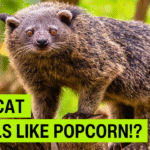

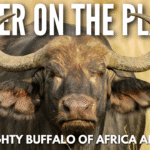


Leave a Reply